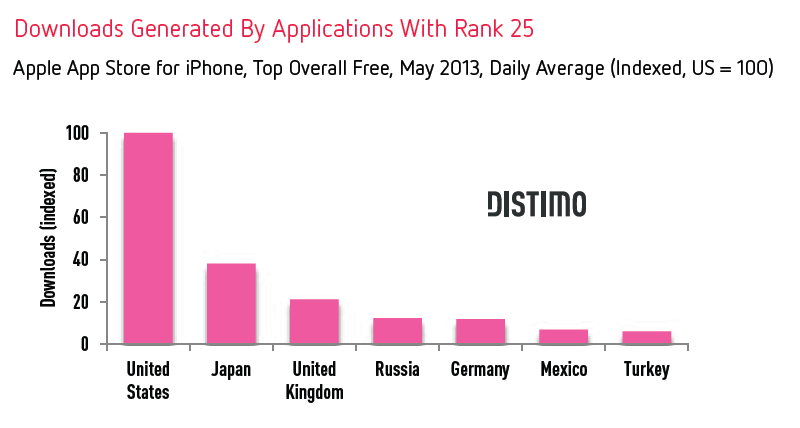Apple’s App Store is home to thousands of mobile applications made by different developers all hoping that their app makes the iPhone App store
top list, which normally guarantees a breakthrough in development and marketing for both the app and of course revenue for its manufacturer. In
order for apps to get anybody’s attention on an app store as large as Apple’s, there has to be some sort of marketing strategy designed to enhance visibility for the app before the actual launch.
App Store Optimization is used to refer to the process of enhancing visibility for an app so that it ranks high in the search results in the App Store in its respective category. Successful app development has to include specific factors, which can lead to a great launch. If you know what’s changed on the App Store, then you can develop your app to handle the new environment. Here are some main factors to keep in mind about the current app store as it continues to evolve:
1 App at a time
Apple has evolved quite a bit and is now designed to display better search results. There are no search engines to link users to the app store. Furthermore, app creators can only display one app at time and it must be their own app. This directly impacts the top 10 apps position by making the first few results highly valuable for app developers
“Genius”, “Categories” replacement
Another tool removed from the traditional main menu is the “Categories” section, which shows that Apple is slowly taking users away from the typical hierarchical display of apps and putting emphasis on Search and its
capacity to sort out the most relevant apps for the user.
New App Store rankings
Apple’s app store itself has incorporated the usability function that allows the iOS to classify different apps by what they do instead of just their names. So users can search apps based on their specific function. This technology means that the App Store has a better understanding of applications and can sort through them to match specific apps to the intent of the user. This also means that the Apple Store no longer relies exclusively on keywords when determining rankings for applications, and this introduces a
new dynamic in the development process.
Speed of download
Ranking factors include the speed at which an application is being downloaded according to a study from BTIG. For instance, the recent iOS 6 upgrade left millions of users without YouTube in their apps, which meant they had to download it again, and as a result of the high rate of downloads, YouTube was ranked #1 the App Store. So now that you have a good idea of how the App Store operates, how can you ensure you get high rankings?
Tips on rankings
You can use a ‘Lite’ or Free version of your app to help promote it. An iPad version could also be very useful in getting visibility for the app. Always link to the App page from your website and any other relevant page. Social media should be integrated into the app, and sharing across different digital channels should be made easy. Most developers run ad campaigns for their apps for promotion. You can target your audience by putting up promos on related top apps, search engines or display networks.
About the profile
A profile should never lack the following:
A cool logo Fancy screenshots designed to bring out the best features in the app Definite value features Mobile app analytics firm Distimo recently did a comprehensive survey on App Store where they found some interesting figures. It takes no less than 23,000 free downloads per day for an app to get spot #50 in the Apple’s app store. Paid applications need ‘only’ 950 downloads per day to get into the same spot on paid apps. Top Grossing charts are just as tough to get into. The #50 spot is reserved for apps generating at least $12,000 in daily revenue.

Keep in mind though that this particular analysis was solely focused on iPhone and did not look into iPad downloads.
Even though getting into the top fifty list seems so challenging, most developers aim for the top 10 list, which is even more difficult to get into, but which brings with it the highest visibility for an app. Apps among the top 10 free iPhone apps need as much as 72,000 downloads per day in order to retain their top 10 status, while paid apps need more than 4,000 downloads per day to remain on the same list.
In order for an application to reach the top 10 Grossing chart, it needs to rake it an average of $47,000 in daily revenue.
Distimo further investigated the day-to-day figures, how the numbers fluctuate, how it relates to the chart and how downloads change from one day to another. Weekdays need fewer downloads for apps to retain their general positions in the charts, but on Sundays, the numbers go up by up to 11% for all downloads, which means that apps need more downloads per day in order to break into the charts.

For iPad app developers, the numbers are not so stringent. One algorithm shows that it takes 8,200 downloads per day, on average, for free iPad apps to break into the top 50 chart. This is a much lower number compared to iPhone apps. Daily downloads for paid apps is also significantly lower at 340 average downloads.

Paid apps differ widely in popularity across various categories. For instance, in the Weather and Education categories, users are much more willing to spend money on apps than any other category. The new algorithms put in place by iOS are a lot more sensitive, which means that developers have to try to put all the right factors in place before launch; otherwise, the app will have a rough time getting into the iPhone App store top list.

